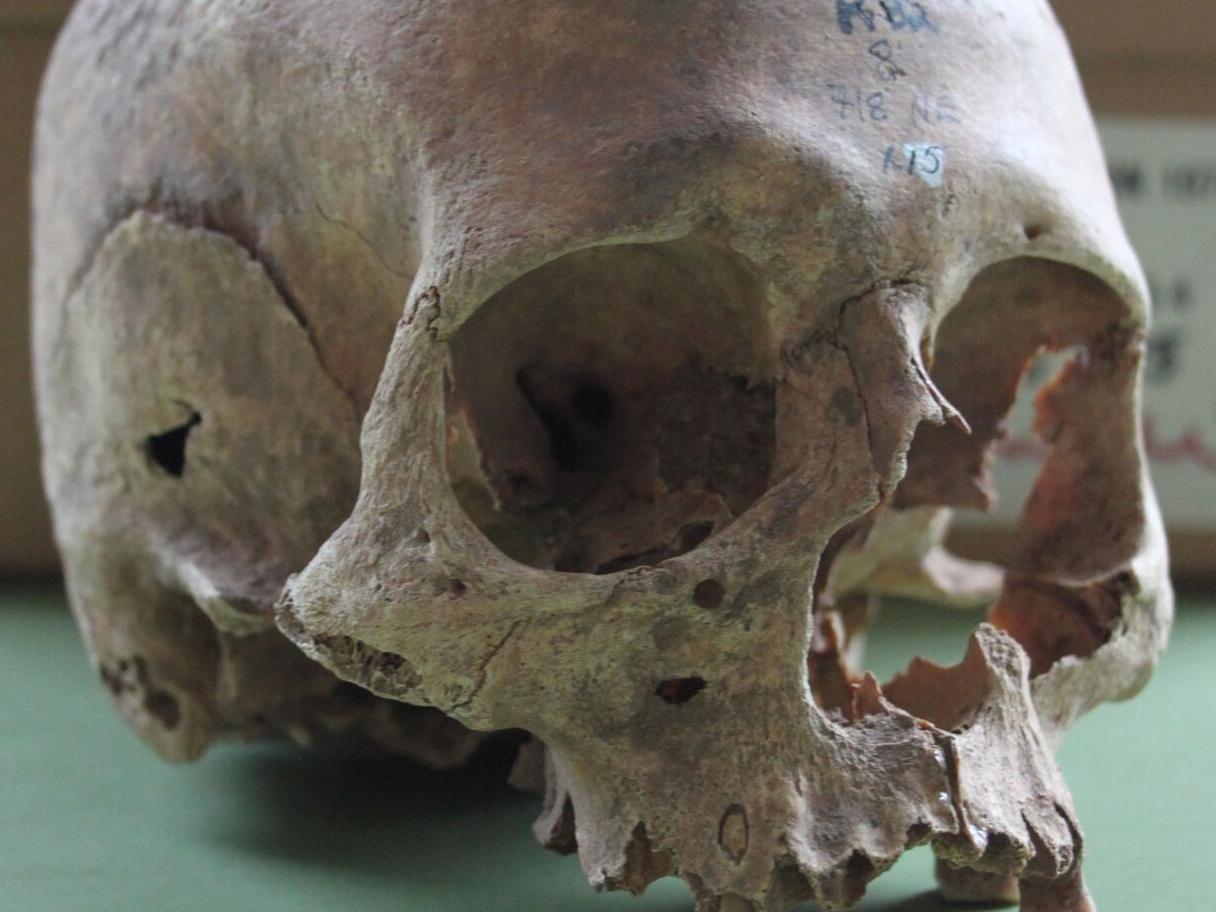Mass grave of 'Viking Great Army' buried in vicarage garden identified by archaeologists
New radiocarbon dating places remains at time of a ninth-century invasion of England by warriors from across Scandinavia

A mass grave found in a vicarage garden contains the remains of a Viking army that invaded England, according to new analysis.
The remains of nearly 300 people were first discovered in the 1970s, but their identities have remained a mystery until now.
Excavations unearthed the bodies underneath a shallow mound by St Wystan’s Church vicarage in Repton, Derbyshire.
Now, radiocarbon dating by a team at the University of Bristol has placed them in the late ninth century, when records suggest a “Viking Great Army” invaded and drove the local king into exile.
Also known by Anglo-Saxon chroniclers as the “Great Heathen Army”, this invading force consisted of warriors from across Scandinavia joined in an alliance to invade England.
“The date of the Repton charnel bones is important because we know very little about the first Viking raiders that went on to become part of a considerable Scandinavian settlement of England,” said archaeologist Cat Jarman, who led the study.
Their findings were documented in the journal Antiquity.
The archaeologists think the mound in which the remains were discovered was some sort of burial monument to the Great Army.
Alongside the mound was another grave containing four children, at least two of whom showed signs of traumatic injury.
The archaeologists who initially discovered the site suggested these remains could be evidence of sacrificial killings made to accompany the Viking dead.
Within the mound, there was evidence of 264 bodies, the majority of which were young men, alongside Viking weaponry and artefacts.
Some of the skeletons showed signs of violent injury, adding further to the evidence that they came from an invading force.
However, despite the extensive evidence, initial analysis of the unearthed bones suggested they did not, in fact, belong to a band of Viking warriors.
Radiocarbon dating appeared to suggest the bones belonged to people buried over the course of several centuries.
“The previous radiocarbon dates from this site were all affected by something called marine reservoir effects, which is what made them seem too old,” said Ms Jarman.
“When we eat fish or other marine foods, we incorporate carbon into our bones that is much older than in terrestrial foods. This confuses radiocarbon dates from archaeological bone material and we need to correct for it by estimating how much seafood each individual ate.”
By using a more sophisticated dating methodology that took this into consideration, Ms Jarman and her team arrived at a date that was consistent with historical records of the Viking Great Army.
“Although these new radiocarbon dates don’t prove that these were Viking army members it now seems very likely,” she said.
“It also shows how new techniques can be used to reassess and finally solve centuries-old mysteries.”
Join our commenting forum
Join thought-provoking conversations, follow other Independent readers and see their replies
Comments